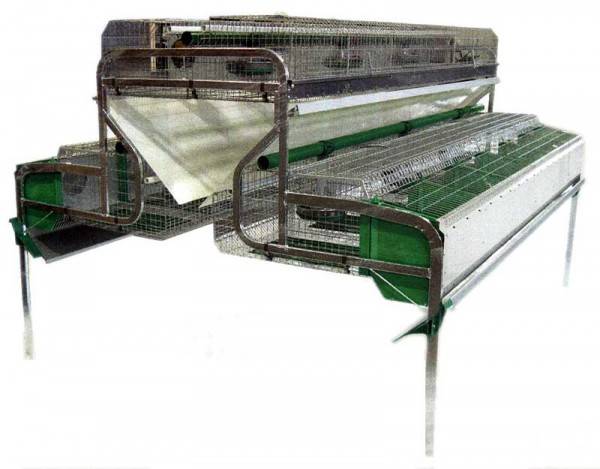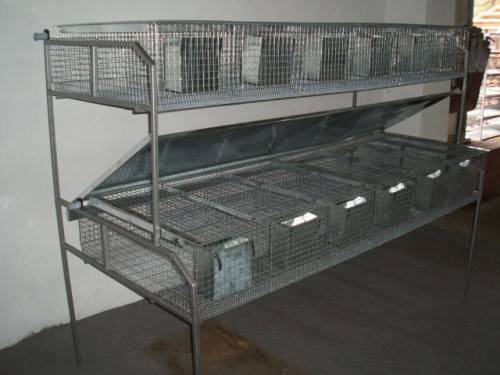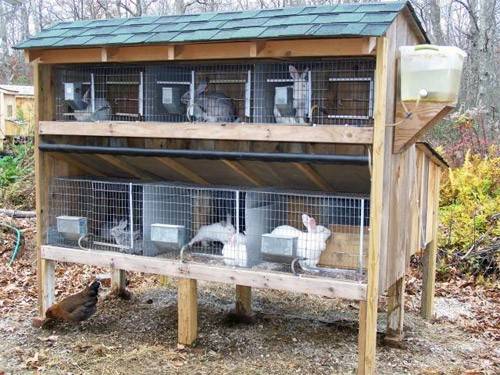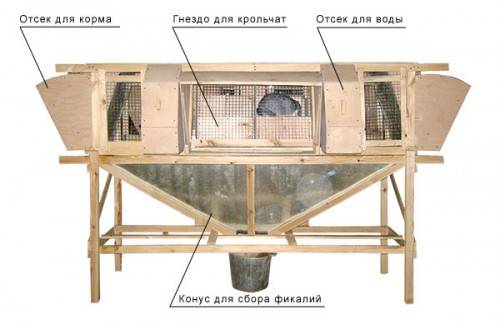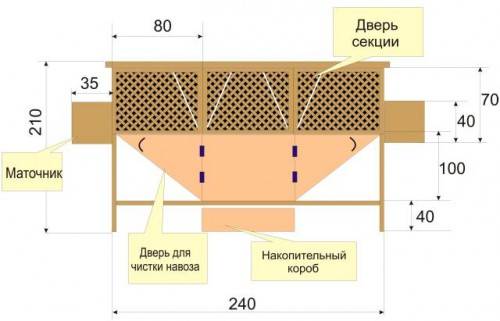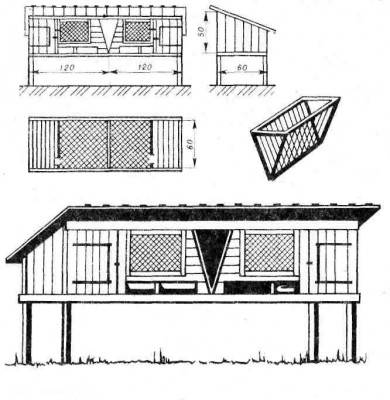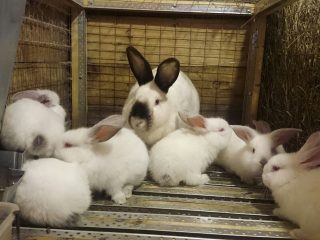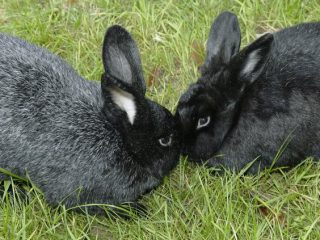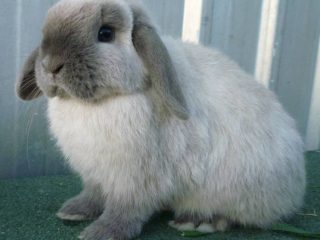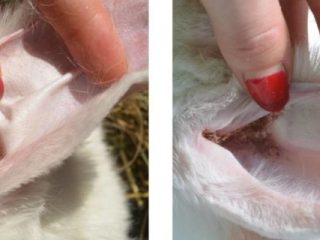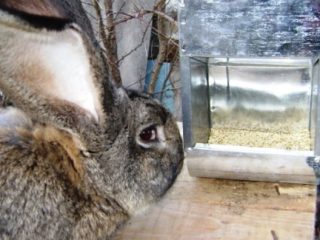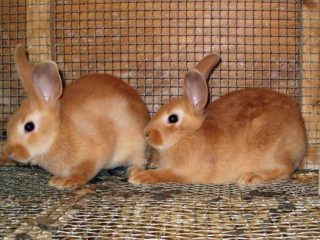Content
There are many requirements for industrial rabbit cages. The main ones are: ensuring the comfort of animals and ease of service. When these conditions are met, rabbits gain weight faster. Increased productivity allows farmers to profit from rabbit farming. Industrial Cells usually of steel mesh, but wooden elements may also be present.
Varieties of industrial models
Cages for industrial rabbit breeding are produced in different types. Structures are stationary for indoor and outdoor installation, mobile, as well as with an aviary. Since rabbits can be kept outdoors and indoors, the arrangement of housing for them is very different:
- One-sided cages are used to raise animals on the street. They are placed along the wall or a solid fence without cracks. The back and side walls are solid. This approach is due to the provision of protection of rabbits from wind and precipitation.
- When keeping rabbits indoors, double-sided structures are used. They are made entirely of steel mesh for efficient ventilation.
Keeping more than 100 animals indoors is difficult. This number of rabbits are usually bred outdoors. A feature of the house, intended for outdoor rabbit keeping, is its unlimited size.
Usually, 6 types of cages are used in rabbit breeding:
- Young rabbits are kept in group cages. That is, young animals that were weaned from a rabbit at the age of 1–1.5 months. Rabbits are divided into two groups: individuals for slaughter and continuation of offspring. Rabbits of the last group are divided according to gender. Slaughter young animals are kept in groups of 8-10 heads. The size of the cage is calculated so that 0.12 m falls per individual2 area. Breeding rabbits are placed in 6-8 heads, giving each animal 0.17 m2 area. When raising rabbits outdoors, a pitched roof made of a waterproof roof is installed above the houses.On the street, the cage for young animals is raised from the ground, and indoors they provide maximum light and an influx of fresh air.
- At the age of three months, the breeding males are seated in separate cages, and the females are grouped in three individuals. Slaughter males can be kept in groups, but they must be neutered. Cage sizes for rabbits of this age depend on the breed. Usually, a structure with a width of 1.2 m and a height of 40 cm is enough. The feeder and drinker on the rabbit cage are attached to the outside of the grate so that the animals do not turn them over.
- When cage breeding rabbits for a large number of heads, it is convenient to use a multi-tiered shed. The design consists of modules installed in two or three rows to maximize space savings. Shed is common in the southern regions and is installed on the street. At the same time, the distance from the ground to the bottom of the module of the first tier is 60 cm.The depth of the shed is made at a maximum of 1 m, and the width is 2 m. A concrete base is often poured under the structure, and the bottom of each module is equipped with a pallet for collecting manure.
- Double cages are used to house two adult rabbits. These can be males or females. The interior of the rabbit housing is divided by a mesh or plywood partition. The floor is knocked out of the slats. During the rounding period, the female is placed with a mother cell with a hole of 20x20 cm.
- Double cages with an aviary are intended for keeping females with rabbits. The dimensions of the structure are 220x65x50 cm. When equipping such housing, a common access hole is made into the aviary.
- A summer house for a rabbit can be used in the country. It is installed in a dry, shaded area under the trees. The dimensions of the housing depend on the number of living animals. The floor is usually made of galvanized mesh.
Each cage can be made for rabbits with your own hands, and now we will consider what factory designs are.
Overview of industrial models
We will now review the industrial cages used for raising rabbits. They are suitable for farms and the private sector.
Okrol
The Okrol model is used for industrial rabbit breeding. Everything is thought out in the design of the cage so that it is convenient to operate. The model is considered universal. Here you can keep young animals for fattening and broodstock. The convenience of the model is due to the fact that when developing it, the real wishes of the breeders were taken into account. The lower tier of the structure consists of twelve cells. Each of them can be divided by a partition or placed inside the mother liquor. On the upper tier, there are sixteen cages for keeping young animals.
The cage is equipped with a special design of the feeders. Rabbits cannot scoop out feed, and the perforated bottom filters out dust impurities from the feed. The cage is made of galvanized steel mesh. Each module is fixed in a frame fitted with steel posts. If there is a lot of free space, Okrol can be used in domestic rabbit breeding.
Practice FR-231
Model "Practice FR-231" is a two-tier design and is intended for industrial rabbit breeding. At the lower level, twelve queen cells can be installed. Additionally, six nests can be positioned on the top tier. This makes it possible to bring the total number of queen cells to eighteen pieces. The model "Practice FR-231" is reequipped for keeping young stock for fattening. The cage can accommodate up to 90 animals.
The design is designed as a transformer, which allows it to be adjusted to a certain type of livestock: fattening, breeding, arrangement of queen cells, etc. The covers of all modules are equipped with a spring. This mechanism facilitates maintenance of the cells. Practice FR-231 is suitable for home use.
Industrial model Zolotukhin
The cell layout is pretty simple. The structure can consist of one or two tiers. Most often, such cells are used to keep young animals. In the Zolotukhin model, the uterine compartment is not provided. The female will have to hatch offspring right on the floor. In the summer, this option is allowed. It is only necessary to put hay in time for the rabbit to make a nest.
Feeders are attached from the outside directly to the net. They are removable or tiltable for easy cleaning. Water is supplied from the tank through the drinking bowl. The Zolotukhin model is popular in the private and industrial breeding of rabbits.
Mikhailov's industrial model
The photo shows drawings with the dimensions of Mikhailov's cage. The clever design greatly simplifies the care of rabbits. Feed can be poured into the feeders periodically 1-2 times in 7 days. A cone-shaped pallet is installed below the floor. The design allows you to automatically drain the manure into a sealed container. The housing of rabbits always remains dry, clean and practically does not require frequent human maintenance.
The development of new models of Mikhailov continues now. The manufacturer is trying to constantly improve its design, listening to the requirements of rabbit breeders.
Cages from the Research Institute of Fur Farming and Rabbit Breeding
The drawings of the cages presented for the rabbits were developed at the Research Institute. They are intended for keeping adults. The design consists of two compartments.A mother liquor is installed near the side wall. The floor in this area is made of solid planks. The stern section is separated by a partition with a 17x17 cm manhole. Steel mesh is used for the flooring. Sizes of the mother liquor:
- depth - 55 cm;
- length - 40 cm;
- height from the side of the entrance - 50 cm, and from the back - 35 cm.
On the front side there are two solid doors and two mesh doors. On the latter - feeders are fixed. The whole structure is raised 80 cm from the ground with the help of legs.
The video shows industrial cages for rabbits:
Conclusion
Buying industrial cages for home breeding of rabbits is expensive. It is easier, guided by the diagram, to assemble the structure of the house yourself. If you seriously decide to go into rabbit breeding, then from the first profit you can think about purchasing factory-made models.




